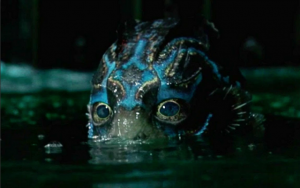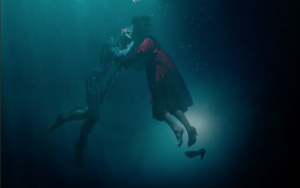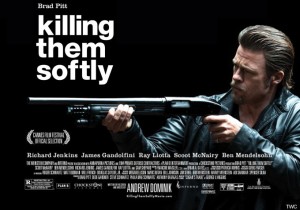RICHARD’S WEEKEND MOVIE REVIEWS FROM CP24! FRIDAY DECEMBER 08, 2017.
 Richard and CP24 anchor Jamie Gutfreund have a look at the weekend’s new movies including “Darkest Hour, “The Shape of Water” and “Wonder Wheel.”
Richard and CP24 anchor Jamie Gutfreund have a look at the weekend’s new movies including “Darkest Hour, “The Shape of Water” and “Wonder Wheel.”
Watch the whole thing HERE!
 Richard and CP24 anchor Jamie Gutfreund have a look at the weekend’s new movies including “Darkest Hour, “The Shape of Water” and “Wonder Wheel.”
Richard and CP24 anchor Jamie Gutfreund have a look at the weekend’s new movies including “Darkest Hour, “The Shape of Water” and “Wonder Wheel.”
Watch the whole thing HERE!
 Richard sits in with CTV NewsChannel anchor Marcia MacMillan to have a look at the Winston Churchill biopic “Darkest Hour, “The Shape of Water,” a movie Richard says “is the kind of movie that made me fall in love with movies in the first place,” and the not-so-wondrous “Wonder Wheel.”
Richard sits in with CTV NewsChannel anchor Marcia MacMillan to have a look at the Winston Churchill biopic “Darkest Hour, “The Shape of Water,” a movie Richard says “is the kind of movie that made me fall in love with movies in the first place,” and the not-so-wondrous “Wonder Wheel.”
Watch the whole thing HERE!
 By Richard Crouse – Metro In Focus
By Richard Crouse – Metro In Focus
Set in Cold War-era Baltimore, The Shape of Water sees Sally Hawkins as Elisa, a woman rendered mute by childhood abuse. A cleaner in a military laboratory and storage facility, she communicates through sign language with co-worker Zelda (Octavia Spencer) and best friend and neighbour Giles (Richard Jenkins). When a mysterious Gill Man, held captive in a giant water-filled iron lung, is brought in the cleaners are told to keep their distance.
Elisa, however, bonds with the beast. After hours, when everyone else has gone home, she stays behind, playing music for the creature, performing dance moves learned from old movies and feeding him her special hard-boiled eggs. They click. She relates to him being unable to speak. “He doesn’t know what I lack,” she signs to Giles. “He sees me for what I am. As I am. He’s happy to see me.” He responds to her gentle nature.
His captors feel differently. They see him — “The Asset” they call him — as a case study, ripe for vivisection so they can discover how he can breathe on land and underwater. Everyone except for Elisa, it seems, wants The Asset dead.
When Elisa discovers a hard-nosed coiled-ball-of-rage named Colonel Strickland (Michael Shannon) is torturing the beast, she hatches a catch-and-release plan. Steal the creature, hide him until the next rainstorm fills a nearby canal and set him free.
The tale of intrigue takes a romantic turn when Elisa begins to regard The Asset as more man than monster.
The Shape of Water is a dreamy slice of pure cinema. Director Guillermo del Toro uses the stark Cold War backdrop as a canvas to draw warm and vivid portraits of his characters. Elisa and Giles are an unconventional family, outsiders in a world that values conformity.
Zelda is a feisty and funny presence — “I can handle pee,” she says, mop in hand cleaning up one of The Asset’s messes. “I can handle poo. But blood? That does something awful to me.” — while the creature is an empathic being with soulful eyes who glows with blue light when he is happy.
The combination of characters and del Toro’s flights of fancy is not only a love letter to the movies — Giles and Elisa live above a movie theatre, watch old musicals on TV and there’s even an Old Hollywood fantasy sequence inside the story — but a Valentine to why we fell in love with the movies in the first place. It’s a feast for the eyes and the heart.
At the centre of it all are Hawkins and Doug Jones as The Asset. Both, one nakedly emotional, the other hidden away under layers of makeup, wouldn’t be out of place in a silent movie. The fantasy elements of the story swirl around but Hawkins’ delicate but steely presence (aided by Jenkins’ heartfelt and occasionally heartbreaking loyalty) grounds the story in reality. Jones, though covered in scales and gills, uses his physicality to project the character’s power and vulnerability.
In the story’s thriller section, Shannon provides a villain whose gangrenous fingers are a metaphor for the rot in his soul. In the actor’s hands, Strickland is as cold as the blood that runs through the creature’s veins.
Wound tightly together these elements combine to form a beautiful creature-feature ripe with romance, thrills and, above all, empathy for all.
 Love is not about appearances. That’s a common theme. It’s “Beauty and the Beast” and “King Kong.” It’s “Creature from the Black Lagoon” and “Edward Scissorhands.” It’s “ET” and “The Hunchback of Notre Dame.” With “The Shape of Water” Guillermo del Toro redefines the age-old maxim for a new generation.
Love is not about appearances. That’s a common theme. It’s “Beauty and the Beast” and “King Kong.” It’s “Creature from the Black Lagoon” and “Edward Scissorhands.” It’s “ET” and “The Hunchback of Notre Dame.” With “The Shape of Water” Guillermo del Toro redefines the age-old maxim for a new generation.
Set in Cold War era Baltimore, Sally Hawkins plays Elisa (Sally Hawkins), a woman rendered mute by childhood abuse. A cleaner in a military laboratory and storage facility, she communicates through sign language with co-worker Zelda (Octavia Spencer) and best friend and neighbour Giles (Richard Jenkins). When a mysterious Amazonian Gill Man, held captive in a giant water-filled iron lung, is brought in the cleaners are told to keep their distance. The creature is not from the Black Lagoon, but from a river in South America.
“The thing we keep in there is an affront,” says the hard-nosed coiled-ball-of-rage Colonel Strickland (Michael Shannon). I should know. I pulled that thing out of a filthy river in South America and dragged it all the way home and we didn’t get to like one another much.”
Elisa, however, bonds with the beast. After hours, when everyone else has gone home, she stays behind, playing music for the creature, performing dance moves learned from old movies and feeding him her special hard-boiled eggs. They click. She relates to him being unable to speak. “He doesn’t know what I lack,” she tells Giles. “He sees me for what I ham. As I am. He’s happy to see me.” He responds to her gentle nature.
His captors feel differently. They see him—“The Asset” they call him—as a case study, ripe for vivisection so they can discover how he can breathe on land and underwater. Everyone except for Elisa, it seems, wants the Asset dead. The United States government wants to study the body, while the Russians want to kill him and steal the body to prevent the US from learning anything about it.
When Elisa discovers Strickland is torturing the beast she hatches a catch and release plan. Steal the creature, hide him until the next rainstorm fills a nearby canal and set him free. Zelda and Giles reluctantly agree to help. “He’s not human,” protests Giles. “If we don’t help it,” Elisa replies, “neither are we.” A doctor (Michael Stuhlbarg) who doesn’t want to see the creature harmed, provides medical advice.
The tale of intrigue takes a romantic turn when Elisa begins to regard the Asset as more man than monster.
“The Shape of Water” is a dreamy slice of pure cinema. Del Toro uses the stark Cold War as a canvas to draw warm and vivid portraits of his characters. Elisa and Giles are an unconventional family, outsiders in a world that values conformity. Zelda is a feisty and funny presence—“I can handle pee,” she says, mop in hand cleaning up one of the Asset’s messes. “I can handle poo. But blood? That does something awful to me.”—while the creature is an empathic being with soulful eyes who glows with blue light when he is happy.
The combination of characters and del Toro’s flights of fancy is not only a love letter to the movies—Giles and Elisa live above a movie theatre, watch old musicals on TV and there’s even an Old Hollywood fantasy sequence inside the story—but a Valentine to why we fell in loves with the movies in the first place. It’s a feast for the eyes and the heart.
At the center of it all are Hawkins and Doug Jones as the Asset. Both, one nakedly emotional, the other hidden away under layers of make-up, wouldn’t be out of place in a silent movie. The fantasy elements of the story swirl around but Hawkins’s delicate but steely presence (aided by Jenkins’s heartfelt and occasionally heartbreaking loyalty) grounds the story in reality. Jones. Though covered in scales and gills, uses his physicality to project the character’s power and vulnerability.
In the story’s thriller section Shannon provides a villain whose gangrenous fingers are a metaphor for the rot in his soul. In the actor’s hands Strickland is as cold as the blood that runs through the creature’s veins.
Wound tightly together these elements combine to form a beautiful creature feature ripe with romance, thrills and, above all, empathy for all. This is the kind of movie that reminds us of why we fell in love with movies in the first place.
 By Richard Crouse – Metro Canada
By Richard Crouse – Metro Canada
The Brady Bunch is pop culture’s most famous blended family.
The story of a “lovely lady who was bringing up three very lovely girls,” and a “man named Brady with three boys of his own,” who “would somehow form a family,” ran for fives seasons on TV, endlessly in reruns and even spawned two movies.
“The Brady Bunch is a live-action modern fairy tale of family,” says Christopher Knight who played Peter Brady on the original show. “In this context it’s less odd that it’s lasted for over 30 years; and why it may last in some respects as long as Mother Goose!”
He may be optimistic on the eternal appeal of his show, but he’s not wrong to imply that the idea of blended families could remain the subject of stories and movies for years to come.
This weekend “cinematic soulmates” Drew Barrymore and Adam Sandler reunite for a third time, following The Wedding Singer and 50 First Dates, for Blended, a romantic comedy about the mixing and mingling of two families.
Hollywood has been blending screen families for years. The grandfather of these blended family stories has to be Yours, Mine and Ours.
Based on the memoir Who Gets the Drumstick? by Helen Beardsley, this 1968 Lucille Ball, Henry Fonda film sees a widow with eight kids and a widower with 10 children (including Mike, played by Tim Matheson 10 years before he found fame in Animal House) become one big (almost) happy family.
The film was produced by Ball, who became so friendly with the Beardsleys she treated all 20 of them to a trip to Disneyland. ABC and Paramount Studios were so impressed with the film they gave the green light to the similarly themed The Brady Bunch show.
The same year, movie legend Doris Day made her final big-screen appearance in With Six You Get Egg Roll, a blended family story about a widow with three sons who marries a man with a daughter. The kids don’t see eye to eye, but soon figure out a way to live together. Released so soon after Yours, Mine and Ours, Eggroll got good reviews, but, as Roger Ebert wrote at the time, “would probably seem funnier if it didn’t suffer by comparison.”
Finally, Step Brothers is an R-rated look at extreme Peter Pan Syndrome. Will Ferrell and John C. Reilly play 40ish men who become bunkmates and reluctant stepbrothers when their parents (Mary Steenburgen and Richard Jenkins) marry. The familiar reprimand “Grow up and act your age” fell on deaf ears with these guys. It’s like watching two overweight, foul-mouthed 10-year-olds with thinning hair going at each other, but it is good vulgar fun.
 The storyline of “Killing Them Softly” sounds like something straight out of Martin Scorsese’s playbook but it is the execution (pun intended) that makes it a singular experience. The title may recall the name of Roberta Flack’s most famous song, but instead of being about metaphorical love, the movie is a cynical anti-thriller allegory about America’s economic crisis.
The storyline of “Killing Them Softly” sounds like something straight out of Martin Scorsese’s playbook but it is the execution (pun intended) that makes it a singular experience. The title may recall the name of Roberta Flack’s most famous song, but instead of being about metaphorical love, the movie is a cynical anti-thriller allegory about America’s economic crisis.
Set in the waning days of George W. Bush’s presidency, just as he passed the baton to Barack Obama in 2008, the movie begins with two small time crooks, Frankie (Scoot McNairy) and Russell (Ben Mendelsohn) hired by crime boss Johnny Amato (Vincent Curatola) to hold up a secret, high-stakes poker game overseen by low level mobster Markie Trattman (Ray Liotta). The criminal corporation responsible for the game suspects Trattman, but brings in no-nonsense enforcer Jackie Cogan (Brad Pitt) to get to the bottom of the situation.
“Killing Them, Softly” isn’t your godfather’s gangster movie. Talky, deliberate and willfully obtuse, it is less a crime thriller than it is a wordy mediation on recession-era life in the underworld and beyond. The movie’s point-of-view is reinforced by wild sound news broadcasts that pepper the soundtrack and long conversations between Jackie and Driver (Richard Jenkins), a mouthpiece for the criminal organization who seems to be terminally tied up by red tape.
Their scenes and back-and-forth are the film’s most entertaining moments. The humdrum tone belies their conversation’s deadly subject matter and is played to great effect. And that is the beauty of this movie.
Director Andrew “The Assassination of Jesse James by the Coward Robert Ford” Dominik’s visual flair keeps things interesting—a druggy conversation between Frankie and Russell is masterfully represented—but it is the actors who provide the spark.
Liotta brings real pathos to Markie the unfortunate scapegoat and McNairy and Mendelsohn both have a small time reek about them but as strong as they are, its Pitt, Jenkins and James Gandolfini who will linger in your memory.
Jenkins is an anonymous bureaucrat, a cog in the wheel that helps his criminal organization go round, and underplays the role beautifully. The temptation may have been to dirty the character up a bit, but Jenkins plays him straight as a man whose business dirty, but a business nonetheless.
Gandolfini is as wild as Jenkins is buttoned-down. A hitman for hire, he’s more interested in call girls and booze than killing people. It’s hard not to see echoes of Tony Soprano in this troubled killer, but Gandolfini is too skilled to repeat himself. His menace is tempered by self-doubt, and his scenes with Pitt shine.
At the helm, however, is Pitt. Heralded to screen by Johnny Cash’s “When The Man Comes Around,”—”There’s a man going round taking names / And he decides who to free and who to blame.”—he’s a pragmatic psychopath, a ruthless killer who doesn’t like the up-close-and-personal stuff. “I like to kill them softly,” he says. “From a distance; not close enough for feelings.” It’s a complex character, one defined in this movie by his words and not his actions, and Pitt handles it effortlessly.
“Killing Them Softly” won’t be for everyone. More brains than brawn it is about the tension of knowing what’s coming next, and while it does deliver in its violent scenes, it is a film that values ideas more than action. It’s edgy stuff, well handled by Dominik—although using the Velvet Underground song “Heroin” to intro an injection scene seems too standard for a movie like this—but will leave many viewers wondering when Brad Pitt will lose the art house pretentions and get back into the blockbuster business.